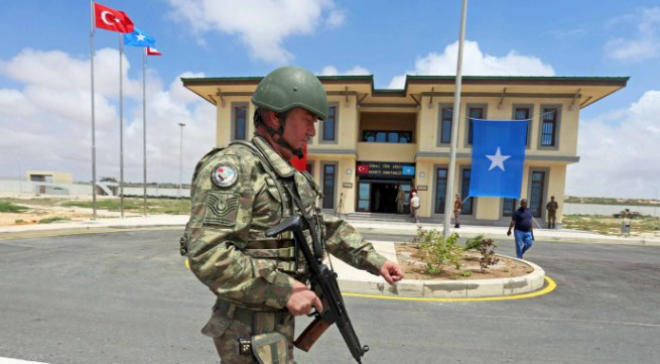REPORT: ISIS militants in Somalia accumulate $6 million through extortion
NAIROBI, Kenya - Considered as 'small but threatening', the IS-Somalia terror network has accumulated close to $6 million within the last two years, a report by the International Crisis Group (ICG) estimates, noting the group’s ambitious plans to expand its territory.
Presently, the IS-Somalia group operates within the Bari region in Puntland and has close to 500 fighters, with a number of them believed to be foreign nationals. The group intends to expand its territory by courting locals through incentives such as the provision of basic commodities.
But despite the financial muscles which are on an upward trajectory, the monetary dealings of the group remain opaque and cannot be properly established and traced, the ICG report observes in the middle of the increasing threats from the group.
"In Puntland, it generates funds by extorting businesses in the seaport city of Bosasso, as well as by helping export small quantities of gold mined in Bari. The U.S. government claims that IS-Somalia has piled up $6 million since 2022. The group also handles the transfer of funds among a range of IS-linked offices and cells," reads part of the report.
UN reports suggest that the organization has funneled money from the Islamic State’s traditional territorial core, in Iraq and Syria, to affiliates in Africa, as well as from its coffers to other branches. Several sources have told Crisis Group that the group has sent money to groups as far afield as IS-Khorasan Province in Afghanistan.
These transactions prodded the U.S. government to pay greater attention to IS-Somalia’s financial network. In January 2023, the U.S. military conducted a raid in Puntland that killed the presumed key facilitator for the Al Karrar office, Bilal al-Sudani, the report says.
U.S. Defense Secretary Lloyd Austin released a statement saying al-Sudani “was responsible for fostering the growing presence of ISIS in Africa and for funding the group’s operations worldwide, including in Afghanistan”.
It is unclear to what extent the operation disrupted the network’s financial dealings, but it seems that IS-Somalia managed to rebuild. Somali and foreign security officials note that IS-Somalia is still making transfers: although the group works on a smaller scale than Al-Shabaab, the latter is not thought to be sending funds to jihadists abroad in the same way.
In May, the U.S. struck IS-Somalia once again, killing three militants but missing Mumin, the primary target. The group has also failed to make significant progress due to concerted efforts by regional military teams in Puntland who have confined them to around Golis mountains.
IS-Somalia has been trying to recruit more foreign fighters with Yemenis and Ethiopians being the culprits. However, the US Africa Command has worked closely with local authorities to prevent the group from infiltrating critical regions as a strategy to suppress it further.
The group, however, does not have much financial influence as opposed to its rivals, the Al-Shabaab, who are dominant in central and southern regions. A report by the United Nations suggests that Al-Shabaab makes up to $130 million annually.
Of this amount, $24 million goes to the purchase of weapons with the remaining going to logistical operations. However, the government of Somalia has devised various counterterrorism strategies, including closing bank accounts and mobile money transfer firms linked to the group to minimize its activities.
GAROWE ONLINE








